“A dangerous man to be among the Irish”
Published in Early Modern History (1500–1700), Features, Gaelic Ireland, Issue 3 (Autumn 2000), Volume 8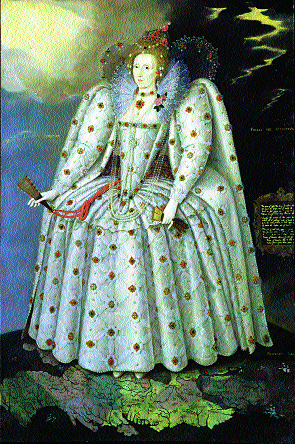
Queen Elizabeth I-on several occasions Archbishop Creagh professed his steadfast loyalty to her. (National Portrait Gallery, London)
In 1585 the English privy council branded Richard Creagh ‘a dangerous man to be among the Irish for the reverence that is by that nation borne unto him’, and ordered that he should be detained in the Tower of London. The eighteen-year incarceration of the Archbishop of Armagh in London and Dublin was acutely embarrassing for the authorities. He had been the subject of anxious enquiries on the part of King Philip II of Spain, was well known to Irish students at the law schools in London and had a wide circle of friends in many European countries. How had this ageing dissident achieved such iconic standing as to be too dangerous for release from captivity?
Early life
Born in Limerick about 1523, Richard Creagh was of a family of Gaelic Ulster origin, as he became proudly aware. By the time of his birth the Creaghs were long enfranchised within the municipality and he probably lived on the street that bore the family name. He grew up in a heterogeneous milieu, imbibing the urban values of the Englishry and Gaelic culture through the Irish language. Creagh was apprenticed to a merchant in Limerick who dealt in spices and herbs. According to the early biographers, the young man was ill-at-ease in the commercial world. His dismay at the practice of adulterating saffron to increase its weight provoked a career change to the priesthood. Another more dramatic account has Creagh escaping drowning in Spain by lingering to hear Mass as his ship foundered.
To accomplish his plan Creagh equipped himself with a knowledge of Latin in Limerick, before departing for the university of Louvain where he studied philosophy and theology. He matriculated in 1549. While a scholar there he was sponsored by a bursary from the Holy Roman Emperor, Charles V. Creagh was most likely ordained priest in the early 1550s in the diocese of Mechelin. On completing his postgraduate studies he returned to his native Limerick about 1557 to take up the work of school teaching. Shortly thereafter the restored Catholic regime under Queen Mary was overturned by the Reformation of Queen Elizabeth.
Abiding commitment to education
Richard Creagh founded and taught in a grammar school located in Limerick’s former Dominican priory. He was joined after 1560 by Thomas Leverous, former Bishop of Kildare, who had been deprived for refusing to take the oath of supremacy. The success of this academy was an early sign of Creagh’s abiding commitment to education. Throughout his career he displayed the humanist’s zeal for reform through pedagogy, advocating the foundation of more schools and a university in Ireland. He prided himself on having obtained a bull from Pope Pius IV for the foundation of a pontifical college in Ireland, and seventeenth-century commentators attributed the foundation of seminaries for Irish students on the continent to his pioneering efforts.
Creagh’s own scholarly interests included Irish history and topography, the Irish language, ecclesiastical history and theology. Much of his output may be dated to the years immediately before and after his graduation as MA at Louvain. He produced Chronicon Hiberniae, possibly incorporating Topographia Hiberniae for which he was also known. A short summary of his treatise on Irish grammar survives, sufficient to show that he had a thorough grasp of the language. This work may have been written for his students in Limerick, as was his bilingual catechism, The essential duty of a Christian, produced about 1560. Clearly Richard Creagh was fixing his Catholic reforming mission on the Gaelic as well as the English community of Ireland.
Reluctant Archbishop of Armagh
By 1562 Creagh’s growing reputation as scholar and teacher recommended him for promotion as bishop. He had already come to the attention of the curia while at Louvain, his name being canvassed by the general of the Jesuits, Ignatius of Loyola, for the vacant sees of Cashel and Limerick, but the unambitious Creagh refused both offers. The papal emissary David Wolfe, whose brief included spotting persons of talent, adjured Creagh by his oath sworn to the papacy as bachelor of divinity to go to Rome to be appointed either as Archbishop of Cashel or Armagh. Creagh departed from Limerick in August 1562 and arrived at Rome in January 1563, after surviving the perils of pirates, Moors and storms.
Richard hoped that he would be allowed to enter the order of the Theatines in Italy, but he was ordered to await papal instructions. While resident in Rome on a subsidy from the pope, he befriended Thomas Goldwell, the exiled Bishop of St Asaph, and took an interest in the closing session of the Council of Trent. In 1564 he was formally proposed and consecrated as Archbishop of Armagh and primate of Ireland. He set out on the journey northwards, passing through Venice, Innsbruck and Augsburg, where he met Peter Canisius, the famed theologian. In the Low Countries he was joined by an English Jesuit, William Good, and together they sailed from Antwerp on 18 October 1564.
Rendering onto Caesar
There is no doubt that Creagh believed that he could serve both the Roman church and the crown in Ireland. On several occasions under interrogation later, the archbishop professed his steadfast loyalty to Queen Elizabeth. He said that he was ‘from youth brought up to serve the crown of England as of nature and duty I was bound, knowing and also declaring in diverse places the joyful life that Irishmen have under England’.
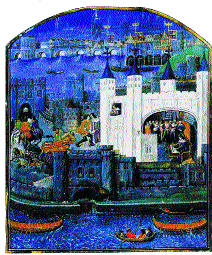
Fifteenth-century painting of the Tower of London where Creagh was imprisoned three times (often in chains) for a total of thirteen years between spring 1565 and his murder in December 1586. (British Library)
Before his second sortie into his diocese in 1566 he wrote a letter to the Earl of Leicester, professing his intention to perform religious tasks only and to render to Caesar that which was Caesar’s.
He was conscious that in opting for Armagh rather than Cashel in his native Munster he had consigned himself to conditions of ‘barbarous wildness, cruelty and ferocity’, but he saw himself as an agent of social and religious reform in Gaelic Ulster. Ominously, Shane O’Neill, the paramount chieftain of central Ulster, believed that Creagh had not used his ‘devoir’ in Rome to obtain the bishopric of Down and Connor for O’Neill’s own brother, and through his agents Shane had lobbied for the primacy to be conferred on his foster brother, Terence O’Donnelly. Creagh hoped, however, that he could make O’Neill serviceable to the crown and that the resources of the church in Armagh might be more readily disgorged to a papally appointed archbishop than to a state nominated one.
His plans went badly awry, certainly on that first journey in the autumn of 1564. Instead of landing in Ireland, Creagh’s ship was driven by adverse winds to Dover. Separated from his travelling companion, Good, who made his own way to Ireland, Creagh journeyed to London and thence to the west coast to sail to Ireland. While awaiting suitable conditions, Creagh was arrested on suspicion of theft of the foreign coins in his possession. Explaining that he had spent ‘a piece of time in merchandise’, he was released, but he had barely set foot in his province when he was again captured while saying Mass in a monastery. He was imprisoned for three weeks in Dublin Ccastle and questioned about his ecclesiastical warrant. He was dispatched to London in chains with his letters of credence. During his imprisonment in the Tower of London in the spring of 1565 he was interrogated three times, twice by Sir William Cecil. The questioning centred on his contacts in Rome, Louvain and Ireland. In all of his answers Creagh stressed the transparency of his motives and actions.
Miraculous escape
This phase of captivity came to a sudden end when Richard Creagh escaped from the Tower on Low Sunday, 1565. For three days previously, as he later recounted, there were various portents of his impending flight. Eventually impelled to the door of his cell, he found it unlocked and walked through at least seven other doors which yielded to him. The guards at the gate half-heartedly challenged him and out he walked onto the streets of London. He managed to get a passage to Flanders despite the reward of £100 sterling on offer for his recapture. A search of his ship revealed the passenger as a fair-haired, French-speaking merchant, and not a white headed bishop, the object of pursuit.
Creagh’s liberation was greeted joyfully by his friends in Rome and Flanders. His emblematic status as escapee coupled with his own strengthened sense of purpose rendered him an important figurehead of the early Counter-Reformation. He stayed at Louvain for several months, corresponding with leading members of the curia and the Society of Jesus. In response to an appeal for funds, he was granted some subsidies by the Vatican. It became clear that the Roman authorities wished him to resume his Irish mission. Copies of documents and letters, captured in 1565, were to be taken to Ireland by Miler Magrath, newly appointed as Bishop of Down and Connor, and a relative of Shane O’Neill who had the confidence of the Roman officials. By April 1566 Creagh was in Madrid where he briefed Philip II on his mission. He also attempted to assure his position by writing to the Earl of Leicester at the English court, telling of his desire to eschew political activity in Ulster.
Poisoned
En route to Ireland, the crew of the ship Creagh had chartered in Spain tried to poison him in the Bay of Biscay, assuming him to be a wealthy traveller. Left for dead by them at Blavet, near Nantes, he recovered and proceeded on his journey, arriving in the north of Ireland by high summer 1566. In late August he conferred with Shane O’Neill at Inishdarell in Armagh in the company of Miler Magrath and Turlough Luineach O’Neill. Purporting to accept his appointment to the primacy, O’Neill demanded to know whether the archbishop would go on an embassy abroad for him, which Creagh refused. Shane then asked Creagh to preach to his soldiers on the following Sunday but the outcome was that Shane ‘rose up and in a very rage did swear or affirm to destroy the cathedral church of Armagh’, which he did within five days. The O’Neills were used to dominating the see of Armagh ‘inter Hibernicos’ and had obtruded upon ecclesiastical lands over several generations. Shane’s plans for aggrandisement in the region were obstructed by the very presence in Armagh of (in his eyes) an old Englishman instead of a Gaelic ally, such as Terence O’Donnelly.
Creagh attempted to convoke the Catholic bishops and clergy of his province to promulgate the decrees of the Council of Trent. But his mission was not aided by Shane’s accusation of heresy (backed by Miler Magrath) against the archbishop who seemed to side with the English. Creagh felt threatened by Shane’s behaviour, reporting that O’Neill claimed that ‘there was none living that he hated more than the queen of England and our primate, meaning my poor body’. It was against this background of rapidly deteriorating relations that Creagh sent a letter to Lord Deputy Sidney at Christmas 1566 in which he offered to mediate between Shane and the governor. He also asked Sidney whether Catholic services could be held in churches in Ulster in order to prevent their being despoiled by O’Neill. Instead of replying Sidney enclosed the archbishop’s letter in correspondence of his own to the privy council in London.
Capture, escape, recapture
Becoming dispirited by his failure to establish his ecclesiastical independence within the O’Neill sphere of influence, Creagh decided to withdraw for a sojourn among his Limerick relatives. In the company of his brother and the papal emissary, David Wolfe, Creagh journeyed from Ulster into Connacht through Sligo. While passing with a party of friars near Kinelea castle, County Galway,
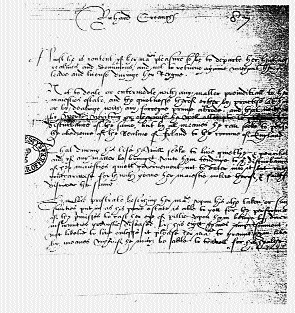
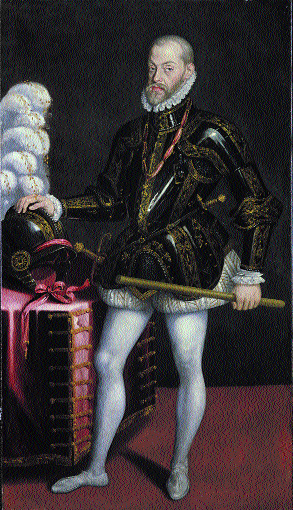
King Philip II of Spain-Creagh was the subject of anxious enquiries from him. (National Portrait Gallery, London)
he was recognised and captured by Roger O’Shaughnessy, the local magnate, on 27 April 1567 and sent to Dublin. Creagh staged another escape, this time with his keepers from Dublin castle, but was recaptured by Meiler Hussey, the steward of the Earl of Kildare. Hussey renounced a proffered reward of £40, implicating his abettors in a conspiracy to win a bounty from Spain for the emancipation of one who was ‘counted a very holy man throughout Ireland’.
By late 1567 Creagh was lodged once more in the Tower of London, being interrogated very closely about his alleged traitorous relations with Shane O’Neill who had been killed the previous June. The conditions of his incarceration in fetters were reported as being particularly harsh, and Philip II instructed his London ambassador to protest to Queen Elizabeth about his treatment, writing that ‘I am sorry for the trouble that they have given the Archbishop of Armagh as I look upon him as a good servant of God’.
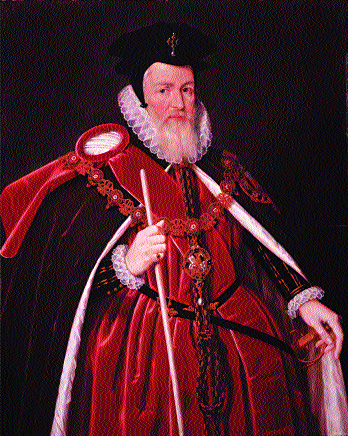
Sir William Cecil-during Creagh’s imprisonment in the Tower of London in the spring of 1565 Cecil interrogated him twice concerning his contacts in Rome, Louvain and Ireland. (National Portrait Gallery, London)
The queen rejected pleas for clemency, saying that the prisoner was ‘a traitor and a rebel’. In March 1570 he was sent back to Ireland to stand trial on charges of high treason and praemunire for upholding the pope’s authority in Ireland.
Found not guilty
It appears that Creagh was tried before the chief justice, Sir John Plunket, and a local jury. The indictment for high treason included the charge that he had met with Shane O’Neill on 15 December 1566 at Lifford to conspire against the crown. Defending himself at his trial, Creagh roundly denied all the allegations, declaring that he was a Catholic bishop and not engaged in any political activity. Eventually the jurors returned a verdict of not guilty and were all imprisoned and fined heavily by the court of castle chamber.
Creagh was detained in chains in Dublin castle for nearly five years. According to observers, the archbishop had an influential role in explaining ‘the true service of God to many of the citizens who until then did hold it for no offence to go to church and learn the common prayer. But he told them that no man can serve two masters’. In 1575 Lord Deputy Fitzwilliam wrote to Sir Francis Walsingham that Creagh ‘hindreth the Archbishop of Dublin’s [Loftus’s] godly endeavour to promote religion which hath inforced him to be importunate to me to send him away’. The English privy council used its police powers of remand to bring Richard Creagh back to the Tower of London.
By now Richard Creagh’s weakened physical state was compounded of many ailments, including the loss of the use of one of his legs from iron shackling. His plea to the privy council for release into exile ‘to live quietly and peaceably’, avoiding anything that would tend ‘to the disturbance of her majesty’s quiet government’, was turned down, but the conditions of his captivity were gradually eased. The Elizabethan regime, conscious of the support and sympathy for Creagh on the part of Irish law students in London, deemed it safer to confine him rather than release him to be a focus for politico-religious disaffection in Ireland.
Nevertheless Archbishop Creagh became emblematic of Catholic dissent in the Tower and outside. A network of sympathisers in Ireland, England and on the continent contributed materially to the alleviation of his prison predicament. Creagh appears to have maintained continuous correspondence with contacts in Italy, France, Spain and Portugal. His cause was not aided, however, by the discovery by the privy councillors of a well intentioned but quixotic mission of Patrick Sedgrave to Rome in 1575 to endeavour to procure his release.
Allegations of sexual abuse
The Elizabethan government, faced with the dilemma of Creagh’s burgeoning reputation as a prisoner of conscience, attempted in 1577 to destroy him with an imputation of serious ‘villainy’. He was charged with having sexually abused the young daughter of one his keepers, Humphrey Bowlande. The complaint was investigated by a commission established by the privy council but the results were inconclusive. The Spanish ambassador reported the refutation of the ‘false charges’ in the spring of 1578. Creagh’s Catholic biographers were in no doubt that the archbishop’s vindication on the fabricated charge was a defining moment in his ordeal at the hands of his persecutors. Indeed they retell the story of how the girl, when confronted with her alleged abuser and asked to accuse him, exclaimed that she had never seen a holier man in her life.
During periods of political turbulence in Ireland Richard Creagh was subjected to most rigourous interrogation. At the end of the 1560s, for example, he was questioned in connection with the revolt of James Fitzmaurice in Munster. Creagh’s name had been invoked in an embassy to Philip II, proposing a transfer of Ireland to Spanish sovereignty. And the king’s ambassador in London reported that the archbishop was pressing on him the urgency of Spanish intervention in Ireland. Again in the late 1570s his case was being reviewed more pressingly as Fitzmaurice’s return from Europe initiated the second Desmond revolt. Creagh’s connections with the king of Portugal through the agency of Antonio Fogaza, a Portuguese dwelling in London, occasioned a fresh round of investigations of the primate, his keepers and abettors in the city. The tenor of the letters to Portugal was non-political in that Creagh importuned the authorities there to intercede with Queen Elizabeth on behalf of the prisoners of conscience in London and elsewhere. It seems that his very presence in jail rendered him a focus for conspiracy though there is no evidence of his participation in anti-government plotting. Throughout the years of captivity he constantly proclaimed his ‘bounden duty to my natural prince [Elizabeth] and my country’.
Prisoner ‘only for papistry’
In the final phase of his life Creagh managed to maintain his Olympian detachment, emerging as a confessorial figure among the Tower prisoners, debating issues of theology and strengthening the faith of correspondents. That he was regarded by the early 1580s as a prisoner ‘only for papistry’ was admitted in the reports of the Tower’s lieutenant. At one stage the authorities in the gaol put Creagh to the test by compelling him to attend a Protestant sermon. He was physically dragged to the chapel, held down while a divine preached against Rome and drowned out when he tried to take the preacher to task. He was referred to in the bills addressed by the lieutenant to the privy council annually as the chief prisoner for whom food and light had to be provided, the cost of keeping him down to 1586 mounting to £667 13s 4d. Yet releasing him to a triumphant homecoming in Ireland where recusancy was becoming more open and widespread was too alarming to contemplate.
Ominously the prison list of late 1586 categorised together Creagh and one Robert Poley. The latter had acted as agent provocateur of Sir Francis Walsingham in the Babington plot against Queen Elizabeth, urging the conspirators on and helping to entrap Mary, Queen of Scots. To preserve Walsingham’s cover Poley was imprisoned with the plotters in the Tower. It was he who administered a portion of poisoned cheese to the archbishop, according to Creagh’s biographers, the poisoning being discovered too late by his fellow prisoners for his life to be saved.
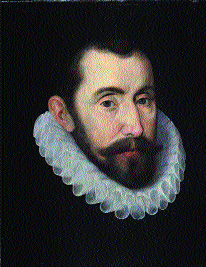
Sir Francis Walsingham-it was his agent provocateur, Robert Poley, who poisoned Creagh in the Tower. (National Portrait Gallery, London)
A physician who examined a urine sample smuggled out of the Tower by Creagh’s friends detected the poison and threw an antidote potion over the prison wall but it was not efficacious. He died in December 1586, aged sixty-three. It is possible that Creagh was quietly sacrificed as the grander design of the destruction of Mary, Queen of Scots, was being effected. An alternative symbol of Catholic defiance was removed before the queen’s execution in February 1587.
Creagh’s legacy
It may have taken some time for news of his death to have been made public in Ireland. By 1590, however, the process of his inclusion by Catholic writers on the roll of martyrs for their religion was well under way. In popular memory, his sanctity lived on. Locals treated the spot where he was captured by O’Shaughnessy in 1567 as unhallowed, and testified to its barrenness and unfruitfulness for long afterwards. His early biographers had no doubts about his sanctity and they also stressed his role as a pioneer of Roman Catholic education both as teacher and visionary of third-level training for Irish youth. Despite his short ministry as archbishop, Creagh vigourously promoted Tridentine norms among the Irish clergy and laity. While rejecting any compromise with Protestantism, he remained professedly loyal to the English crown. As a scholar perhaps his major contribution lay in the first scientific treatment of the Irish language, and his use of it as a tool of instruction in his catechism of 1560. He was above all a champion of the rights of the Roman Catholic church in Ireland against all obtruders, whether in the form of crown officials, ill-disciplined clergy or intrusive Irish magnates such as Shane O’Neill. It was not surprising therefore that he was reckoned to be ‘a dangerous man to be among the Irish’.
Colm Lennon is a Senior Lecturer in the Department of Modern History, NUI, Maynooth.
Further reading:
C. Lennon, An Irish prisoner of conscience of the Tudor era: Archbishop Richard Creagh of Armagh, 1523-86 (Dublin 2000).
W.P. O’Brien, ‘Two Munster primates: Donnchadh Ó Taidhg (1560-2) and Richard Creagh (1564-85)’, Seanchas Ard Mhaca, xiv (1990).
















